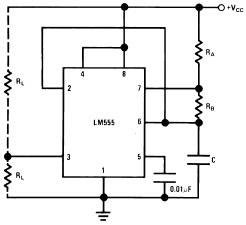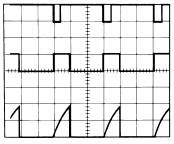Before building any circuit is it a good idea to test every semiconductor you plan to use in the project. This a good practice especially when reusing components from old appliances. This short tutorial describes common procedures for testing of Si and Ge signal and rectifier diodes, Zener diodes, LEDs, Bipolar and MOSFET transistors for common failures like shorts, leaks and opens.
Testing signal and rectifier diode junctions
A regular signal or rectifier diode should read a low resistance on an analog ohmmeter (set on the low ohms scale) when forward biased (negative lead on cathode, positive lead on anode) and nearly infinite ohms in the reverse bias direction. A germanium diode will show a lower resistance compared to a silicon diode in the forward direction. A bad diode will show near zero ohms (shorted) or open in both directions.

Note: often, analog multimeters have the polarity of their probes reversed from what you would expect from the color coding. Many of them will have the red lead negative with respect to the black one.
On a digital multimeter, using the normal resistance ranges, this test will usually show open for any semiconductor junction since the meter does not apply enough voltage to reach the value of the forward drop.
Fortunately almost every digital multimeter will have a diode test mode. Using this mode, a silicon diode should read a voltage drop between 0.5 to 0.8 V in the forward direction (negative lead on cathode, positive lead on anode) and open in reverse. For a germanium diode, the reading will be lower, around 0.2 - 0.4 V in the forward direction. A bad diode will read a very low voltage drop (if shorted) or open in both directions.
Note: small diode leaks in the reverse bias direction are rare, but they will often go unnoticed when using the diode test mode on the majority of digital multimeters. To make sure the diode is good, you should make one more measurement: using a high ohm range (2Mohm or higher) on your DMM, place the negative lead on the anode and the positive lead on the cathode. A good Si diode (the most common type of diode in today's circuits) will usually read infinite ohms. An older Ge diode may have a much higher level of reverse leakage current, so it may show a non-infinite value. When in doubt, try to compare the reading with measurements done on a good diode of the same type.
Testing Zener diodes

For a quick diagnosis, a Zener diode junction can be verified like a normal diode as described above. But, to test for reverse breakdown zener voltage, you will need a simple power supply with a voltage greater than the expected value and a high value resistor.
Connect a high value resistor (to limit the current to a safe value) in series with the zener diode and apply the voltage in the reverse direction across the diode (anode to the negative). The voltage measured across the diode will be the breakdown or zener voltage.
Testing LEDs

LED diodes usually have a forward voltage drop too high to test with most multimeters, so you should use a similar circuit as the one described above.
Make sure to use a power supply greater than 3V and a suitable
current limiting series resistor. A small current of 1-10 mA will be enough to light most LEDs when connected in the circuit.
Testing bipolar transistors
The assumption made when testing transistors is that a transistor is just a pair of connected diodes. Therefore it can be tested for shorts, opens or leakage with a simple analog or digital multimeter. Gain, frequency response, etc. tests can be made only with expensive specialized instruments, but in most cases a simple test is all you'll need when building simple circuits.

Note: some power transistors have built in damper diodes connected across C-E and resistors connected across B-E which will confuse these readings. Also, a few small signal transistors have built-in resistors in series with the base or other leads, making this simple test method useless. Darlington transistors can also show unusual voltage drops and resistances. When testing a transistor of this type you will need to compare with a known good transistor or check the specifications to be sure.
To test a bipolar transistor with a digital multimeter, take it out of circuit and make the following measurements using the diode test mode:
- Connect the red (positive) lead to the base of the transistor. Connect the black (negative) lead to the emitter. A good NPN transistor will read a junction drop voltage of 0.4V to 0.9V. A good PNP transistor will read open.
- Leave the red meter lead on the base and move the black meter lead to the collector - the reading should be almost the same as the previous test, open for PNP and a slightly lower voltage drop for NPN transistors.
- Reverse the meter leads and repeat the test. This time, connect the black meter lead to the base of the transistor and the red lead to the emitter. A good PNP transistor will read a junction drop voltage of 0.4V to 0.9V. A good NPN transistor will read open.
- Leave the black meter lead on the base and move the red lead to the collector - the reading should be almost the same as the previous test, open for NPN and a slightly lower voltage drop for PNP transistors.
- Place one meter lead on the collector, the other on the emitter, then reverse. Both tests should read open for both NPN and PNP transistors.
A similar test can be made with an analog VOM using the low ohms scale. Only 2 of the 6 possible combinations (the B-E and B-C junctions in forward bias) should show a low resistance (anywhere from 100 ohms to several Kohms) and none of the resistances should be near 0 Ohms.
If you read a short circuit (zero ohms or a voltage drop of zero) between two leads, or the transistor fails any of the tests described above, it is bad and must be replaced.
If you get readings that do not make sense, try to compare them with measurements done on a good transistor of the same type.
Some analog multimeters have their probe colors reversed since this makes the internal circuitry easier to design. So, it's a good idea to confirm and label the lead polarity of your instrument by making a few measurements in resistance (VOM) or diode test mode (DMM) using a known good diode. This will also show you what to expect for a reading of a forward biased junction.
Identifying the leads and polarity of unknown bipolar transistors
The type (PNP or NPN) and the lead arrangement of unmarked transistors can be determined easily using a digital or analog multimeter, if the transistor is seen as a pair of connected diodes. The collector and emitter can be identified knowing the fact that the doping for the B-E junction is always much higher than for the B-C junction, therefore, the forward voltage drop will be slightly higher. This will show up as a couple of millivolts difference on a digital multimeter's diode test scale or a slightly higher resistance on an analog VoltOhmMeter.
First make the a few measurements between various leads. Soon you'll identify a lead (theBase) that will show a forward voltage drop (on DMMs) or a low resistance (analog VOMs) combined with two other leads (the Emitter and Collector). Now that the Base is identified, observe carefully the voltage drops across B-E and B-C. The B-C junction will have a slightly less voltage drop (DMM) or a slightly lower resistance when using an analog ohmmeter.
Note: For every degree the transistor increases in temperature, the diode drops will decrease by a few millivolts. This change can be confusing when determining the B-E and B-C junctions. So, make sure you do not hold the transistor under test in your hand and leave enough time for it to cool down to room temperature after soldering!
If you arrived at this point, you already know the polarity of the transistor under test. If the negative lead (black lead connected to the COM on most digital multimeters) is placed on the Base when measuring the B-C and B-E voltage drops - you have a PNP transistor. Similarly - if the positive meter lead is placed on the base, you have a NPN transistor.
This procedure may sound complicated at first, but practicing on a few transistors with known leads will make things clearer in no time. It is a good habit to test every transistor before placing it into the circuit, as the datasheet is not always at hand, and misplacing the leads can have devastating results.
Testing MOSFETs
Field Effect Transistors are difficult to test with a multimeter, but "fortunately" when a power MosFet blows, it blows big time: all their leads will show in short circuit. 99% of bad MosFets will have GS, GD and DS shorted. In other words - everything will be connected together.
Note: When measuring a MosFet hold it by the case or the tab and don't touch the metal parts of the test probes with any of the other MosFet's terminals until needed. Do not allow a MosFet to come in contact with your clothes, plastic, etc. because of the high static voltages they can generate.
You'll know a MosFet is good when the Gate has infinite resistance to both Drain and Source. Exceptions to this rule are FETs with protection circuitry - they may act like there is a diode shunting GS - a diode drop for gate reverse bias. Connecting Gate to Source should cause the Drain to Source act like a diode. Forward biasing GS with 5V and measuring DS in forward bias should yield very low ohms. In reverse bias, it will still act like a diode.
Another simple test procedure: connect the multimeter's negative lead to the source of the MosFet. Touch the MosFet's Gate with the meter's positive lead. Move the positive probe to the Drain - you should get a low reading as the MosFet's internal capacitance on the Gate has now been charged up by the meter and the device is turned-on. With the meter's positive lead still connected to the Drain, touch the source and gate with your finger. The Gate will be discharged through your finger and the reading should go high, indicating a non-conductive device! This simple test is not fail proof, but it's usually adequate.








 11:34
11:34
 DAS
DAS

 Posted in:
Posted in: 



































